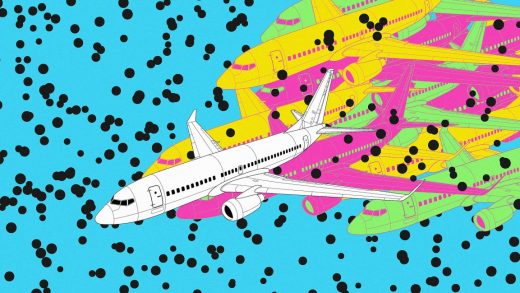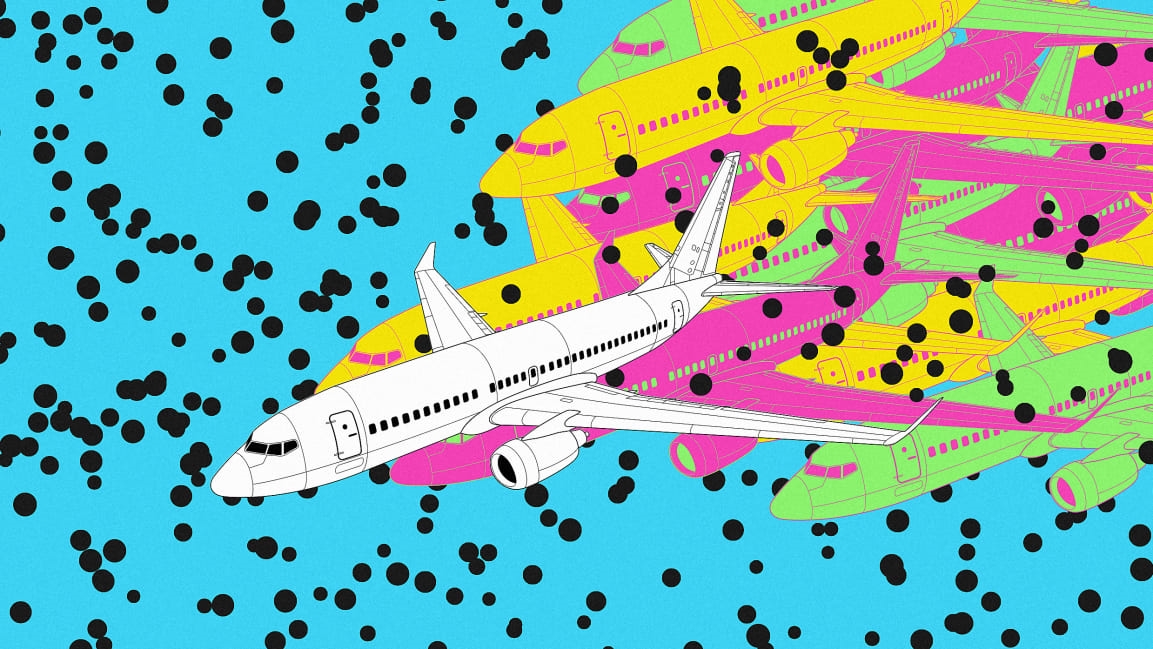Airlines will stop coronavirus ‘ghost flights’—now we need to rethink the future of flying
With the demand for flights drastically down amid the coronavirus outbreak, the airline industry is reeling. Avoiding air travel is top of mind for most of the public, and that means revenue losses—of up to $113 billion, according to the International Air Transport Association, if COVID-19 spreads broadly—but it also means that we’re in a crucial moment to reassess the industry’s impact on the environment.
Both the European Commission and the Federal Aviation Administration this week suspended rules that require airlines to fly a certain percentage of their flights in order to hold onto their allotted time slots. Before these announcements, many airlines were operating “ghost flights,” flying empty planes with no passengers in order to hold onto coveted takeoff and landing slots. European and U.S. regulations required airlines to use their slots at least 80% of the time or potentially lose those slots to competitors.
“The rules regarding landing slots at flight-constrained airports are perfectly understandable from the perspective of ensuring that this scarce commodity, the privilege of landing a large aircraft at a specified time in a specified place, isn’t wasted,” says Annie Petsonk, an aviation expert at the Environmental Defense Fund. “At the same time, the rules need to take account of the fact that urgent situations happen, like the coronavirus epidemic.”
Petsonk says she thinks that, after the coronavirus outbreak, airlines and governments will look at these rules more closely, potentially tacking on revisions that allow them to be suspended in an orderly way, and with some regularity. “It prompts a larger look at the rules that undergird the operation of the air transport system through the lens of climate protection,” she says, “so that we can ensure that the incentives to reduce emissions and the incentives to utilize scarce commodities like landing slots are aligned in ways that [contribute] to climate protection.”
Those earlier images of empty flights prompted some outrage. Grant Shapps, U.K. secretary of state for transport, requested that regulators reconsider that 80% utilization rule, writing that ghost flights were “bad news for the environment.” Many people noted that airlines were using up thousands of gallons of jet fuel to operate these empty planes.
Not all empty flights are still operated just to hold onto landing slots. Airline expert Seth Kaplan noted that it’s more complicated than simply canceling a flight because there aren’t enough passengers. “There’s often a cascading effect,” he says. “A flight empty in one direction might be well booked in the other direction. . . . These planes are scheduled in intricate patterns where a flight goes from one city to the next, to a subsequent city where the crew is waiting for that plane, or a certain pilot who is qualified to fly a certain kind of plane is expected at the next place.”
As demand drops and coronavirus continues to spread, these complexities may ease up. In that case, releasing airlines from their use requirements makes sense, but the airlines aren’t necessarily supportive of that move for environmental reasons; the environmental benefit is an aside. “If there really is no demand, and no complexity, airlines are going to be happy not to operate a flight because it costs a lot of money to operate a flight,” he says. “Broadly speaking, what’s good for the airlines in terms of not operating ghost flights from a financial perspective is also good environmentally.”
There’s an environmental concern, then, about what happens if flight demand starts to rise again. Aviation currently accounts for about 2% of global emissions, but it’s one of the fastest-growing areas in terms of climate change contribution. It could potentially account for more than a quarter of the world’s global carbon budget if global warming is limited to 1.5 degrees Celsius by 2050. “A question is whether the confluence of the coronavirus and the greater awareness of travel’s impact on the climate will together prompt people to reconsider travel once the immediate crisis of the coronavirus has passed,” Petsonk says. Though travel for tourism or to visit family and friends may always be in demand, the switch to remote work and teleconferences during the coronavirus outbreak has shown that in-person meetings aren’t essential.
On Friday, the International Civil Aviation Organization, a UN agency that regulates international flights, will decide whether, and how, it will go ahead with the Carbon Offsetting and Reduction Scheme for International Aviation, a carbon offsetting plan its member countries adopted back in 2016. The agency could put off that decision, Petsonk says, because it is preoccupied with coronavirus, or it could adopt a weak set of standards that allows for the use of less effective carbon credits. “Or, they could start the market with a good supply of carbon credits that have high integrity . . . and get this going so that once the coronavirus immediate crisis passes, aviation can focus on the longer-term crisis of climate change.”
The current drop in flight demand because of the spread of COVID-19 will surely lead to a drop in carbon emissions for this year, though Petsonk says we don’t know how big that impact will be. But that benefit could be outweighed by an increased demand once the coronavirus outbreak has leveled. “Aviation needs to, even in this time of coronavirus crisis, keep in mind its climate responsibilities,” Petsonk says. And the public does too. “As members of the public, rethink [your] travel in immediate terms because of the coronavirus, and rethink it in the longer term because of the potential climate impact,” she says. “We have to keep our eye on both, the ways of reducing the health risks and ways of reducing the climate risks.”
(18)



